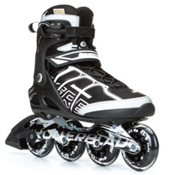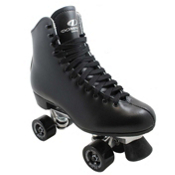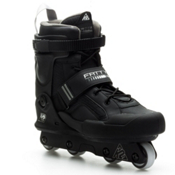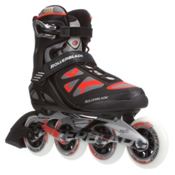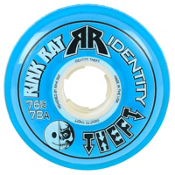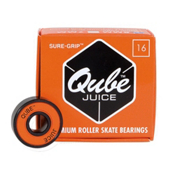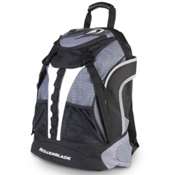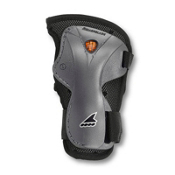Artistic Roller Skating
Artistic roller skating is an exciting skating discipline that has steadily increased in popularity over the years. Artistic roller skating requires strong mental and physical abilities, and the mastery of the basic roller skating fundamentals. As with many aspects of roller skating, the origins of artistic roller skating can be traced back to the early days of artistic ice skating. In this article we will look at three types of artistic roller skating: figure roller skating; dance roller skating and precision roller skating. We will also discuss some of the unique features of artistic roller skates.
Artistic Roller Skating (Figure Skating)
The idea of figure skating on roller skates was taken from ice figure skating, and was one of the earliest forms of artistic roller skating. Artistic roller skaters began attempting figure skating moves sometime in the early 1800s. In 1819 Monsieur Petitbled (a Frenchman) developed a new roller skate design, and tried to convince the public that a skater could do anything on his roller skates that could be done on a pair of ice skates. Monsieur Petitbled was unsuccessful in his attempt to convince this notion to roller skaters. However, it is likely that artistic ice skaters of his day were successful in performing many figure skating moves on his newly developed roller skates.
Jackson Haines (considered by many as the father of modern day ice figure skating) also made his mark by performing figure skating moves on roller skates. Haines was a professional ballet dancer, and an excellent ice and roller skater. Haines put on roller figure skating shows for James Plimpton to help promote Plimpton’s skates, and the new roller skating recreational activity as a whole.
The skating moves performed during roller figure skating are not that radically different than those performed in ice figure skating. During artistic roller skating competitions “roller” figure skaters are judged on their form, figures, jumps, turns, posture, etc just like ice figure skaters. One of the most notable differences between roller and ice figure skating is the media coverage. Ice figure skating is very popular and widely covered; while roller figure skating is rarely covered by the national media.
Artistic Roller Skating (Dance Skating)
Dance skating is another form of artistic roller skating. Dance skating, simply put, is dancing on a pair of roller skates. Artistic dance skating is performed with the skater’s selection of music playing in the background. During dance skating competitions artistic skaters can either perform their dance moves solo or with a partner. Artistic dance roller skating can be broken down into three categories; compulsory, original, and free dance.
Compulsory dance roller skating resembles ballroom dancing and requires the skater(s) to perform a set of mandatory dance moves and steps. Compulsory dance skating can be performed solo or with couples however, the majority of compulsory dance skating is performed by couples. Compulsory roller dance skating is very similar to its ice skating compulsory dance skating counterpart.
Original dance roller skating is similar to compulsory dance roller skating. One of the main differences is that Original dance roller skaters can choose their own music. However, the music Original dance skaters choose must fall within predetermined tempo ranges.
Artistic free dance roller skating can also be performed solo or with a partner. Free dance roller skating is quite different than compulsory and original dance skating. In free dance roller skating the skater(s) are generally not required to perform a set of mandatory dance moves and steps. Free dance skaters are judged on their speed, jumps, spins, etc. Artistic free dance roller skaters are allowed to select their music, costumes and the moves they choose to perform.
Artistic Roller Skating (Precision Skating)
Precision skating is another form of artistic roller skating that has increased in popularity over the years. Precision roller skating is quite different than the other types of artistic roller skating (figures, dance, freestyle). Precision skating is performed by a “team” of 8-24 roller skaters.
Artistic precision roller skaters work closely as a team to perform various synchronized movements. Precision skaters perform their routine to music and attempt to move together as a single unit, precisely at the same time, and in perfect unison. As with other types of artistic roller skating, the idea for precision skating was taken from ice skating. Unlike the other types of artistic roller skating, precision skating has only been around in the United States since 1957; and that was precision ice skating, not precision roller skating.
Artistic Roller Skates
Artistic roller skates must be designed to withstand jumps, dance movements and other demanding artistic roller skating moves. Artistic roller skates weigh less than the average recreational roller skate, and are normally made with a high-cut leather boot. The high-cut leather boot provides the artistic skater the additional needed support. Artistic roller skates have a stronger sole plate that allows the skate to withstand the impact of jumps, and other artistic skating moves. Artistic roller skates have smaller wheels than recreational roller skates, and should be equipped with at least an ABEC-3 rated bearing. Because of the various jumps, spins and other artistic skating moves, artistic roller skates either have adjustable toe-stops or no toe-stops at all.
|
Skate Equipment >
Roller Skating Equip
Roller Skating Info
_
